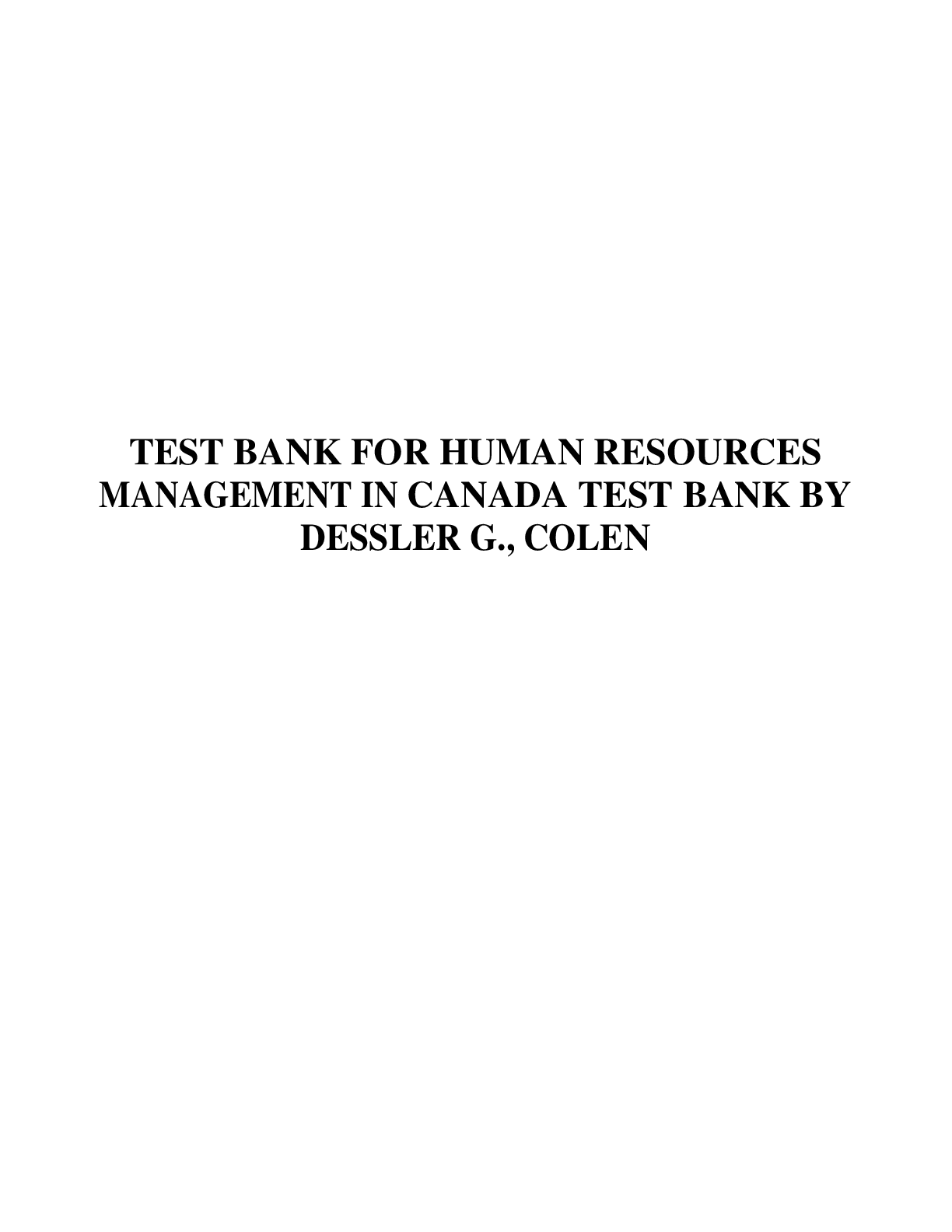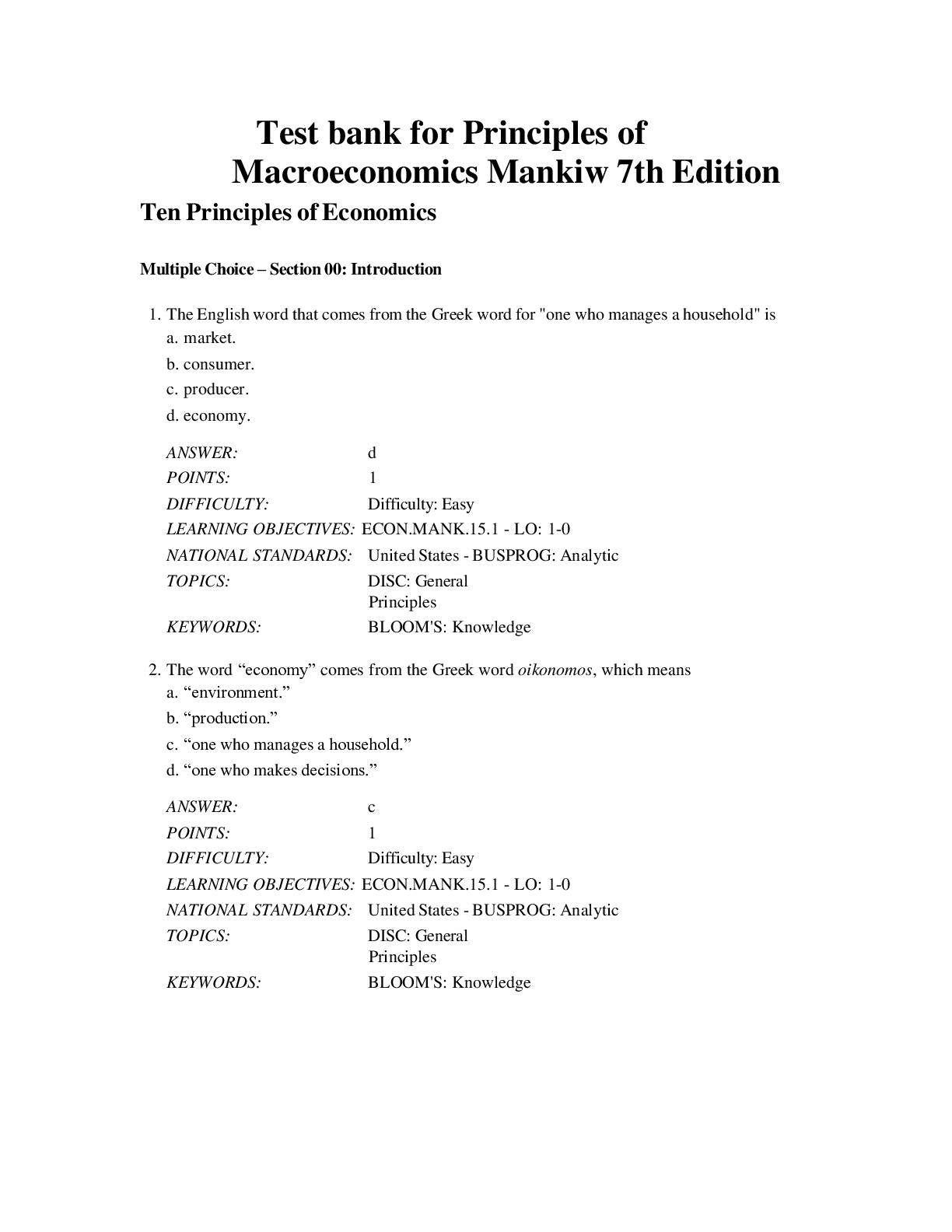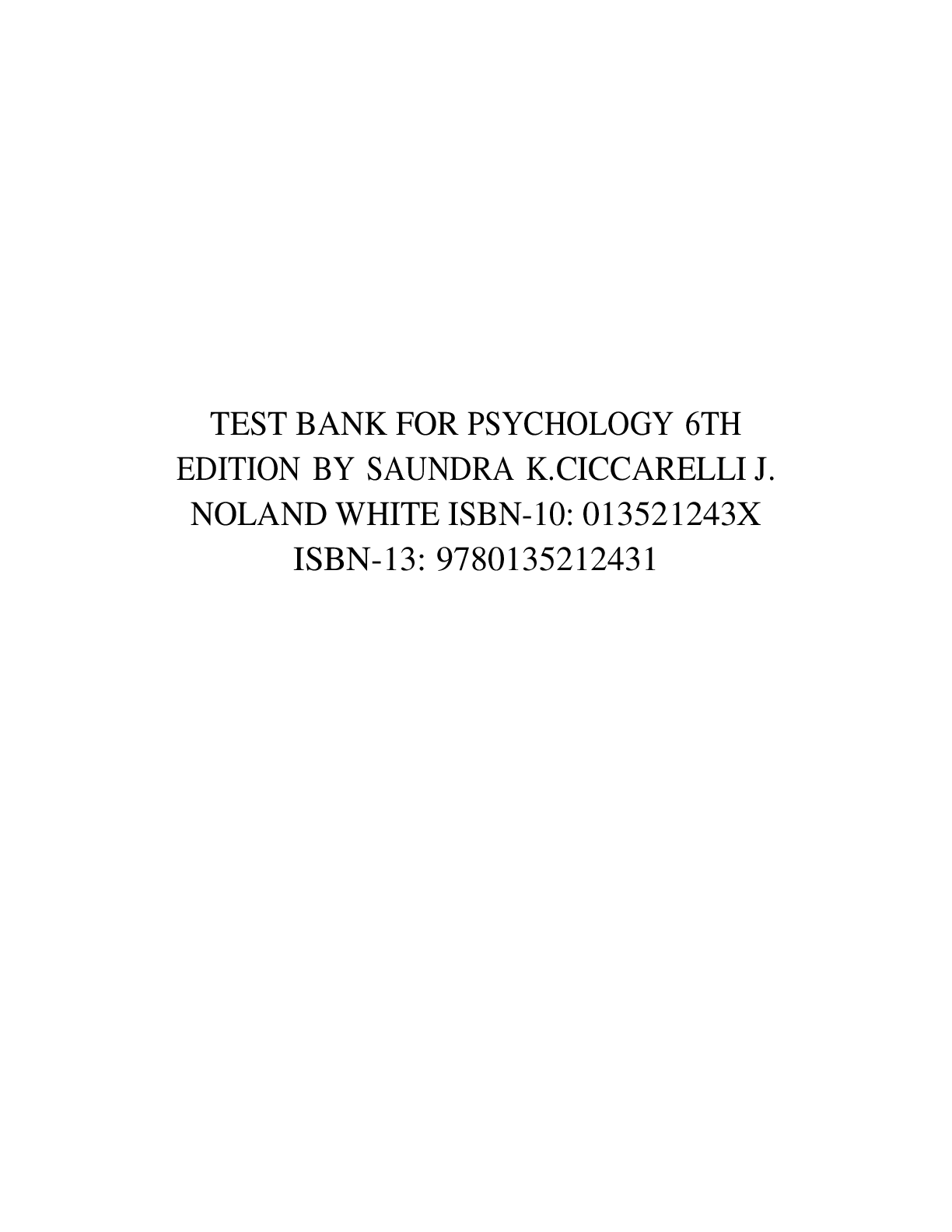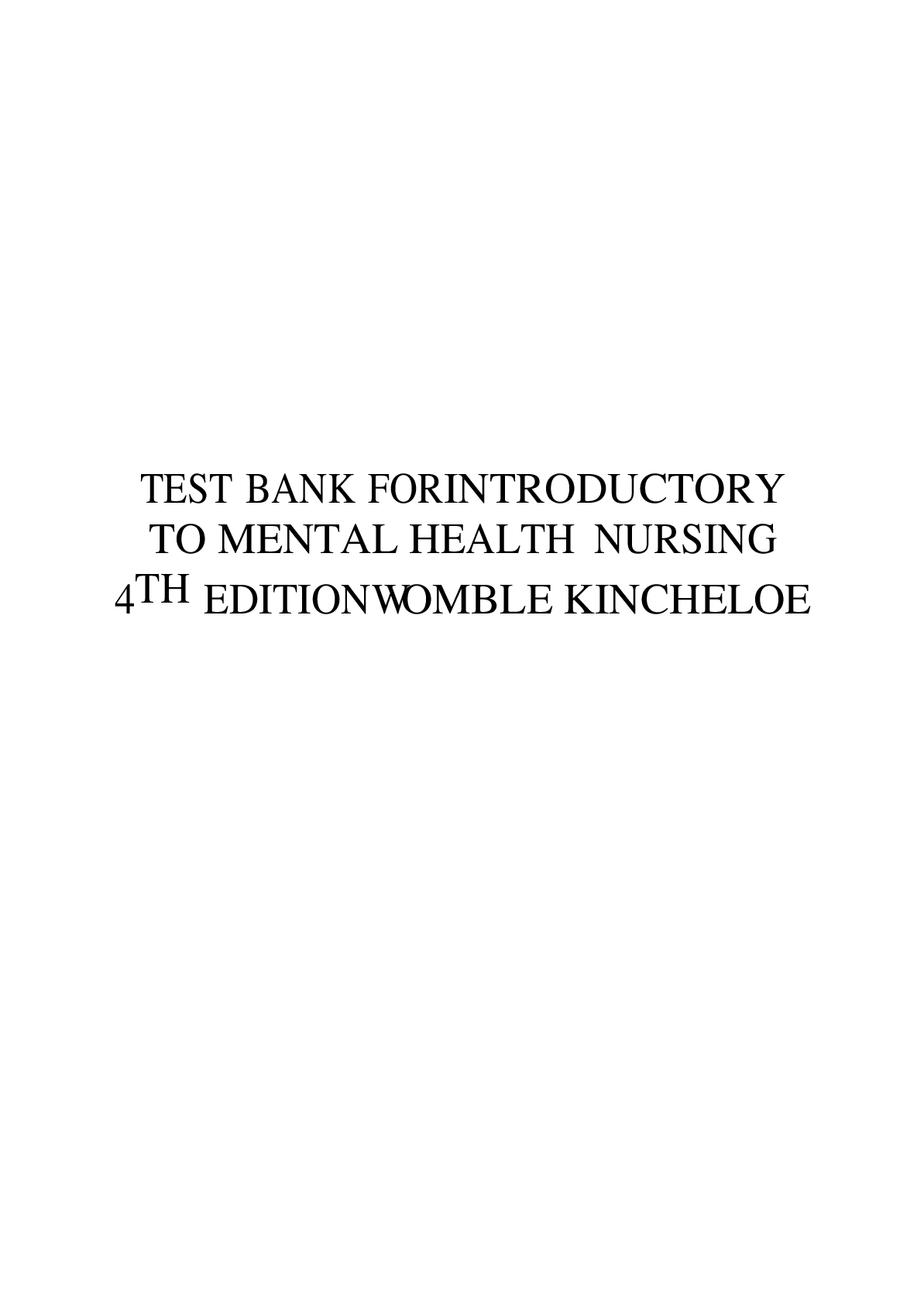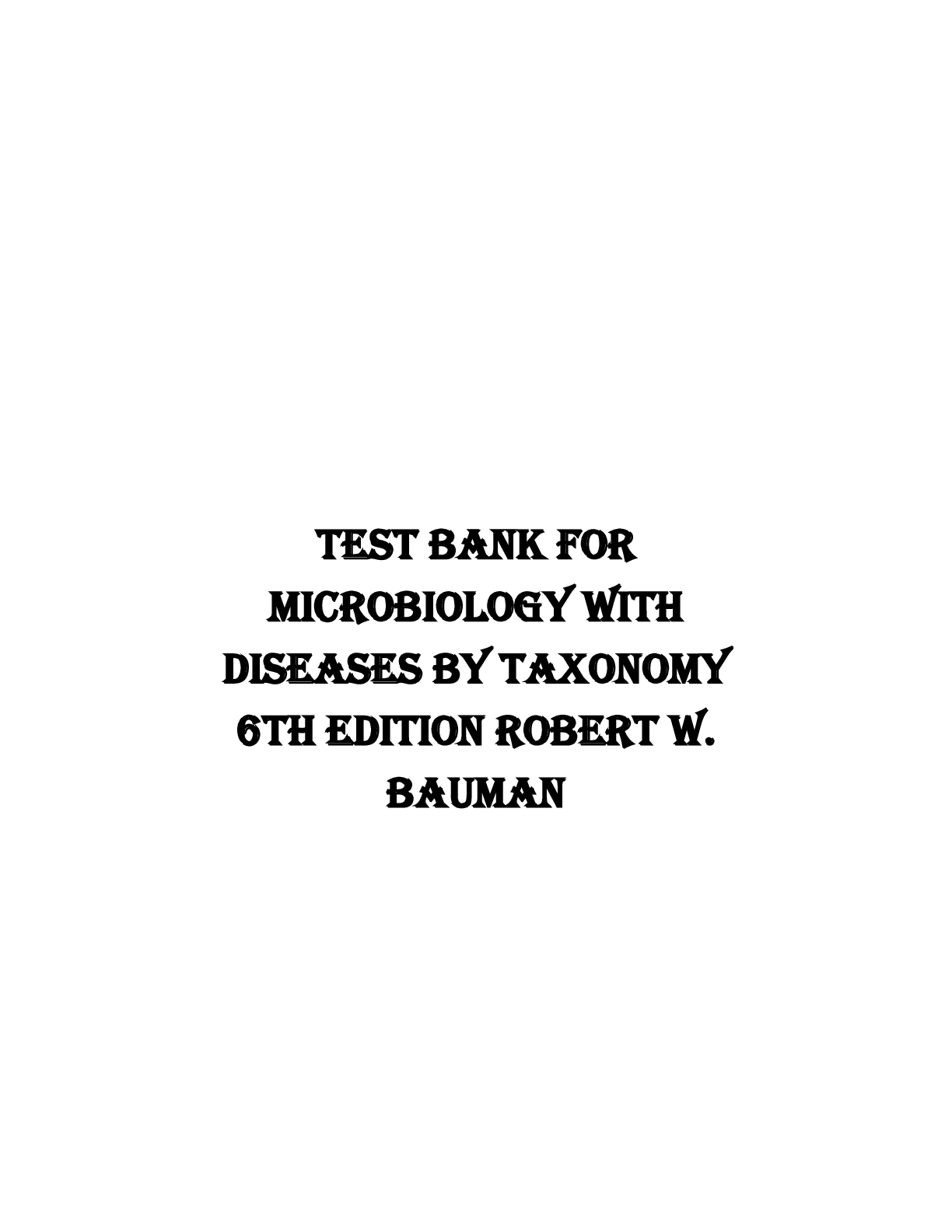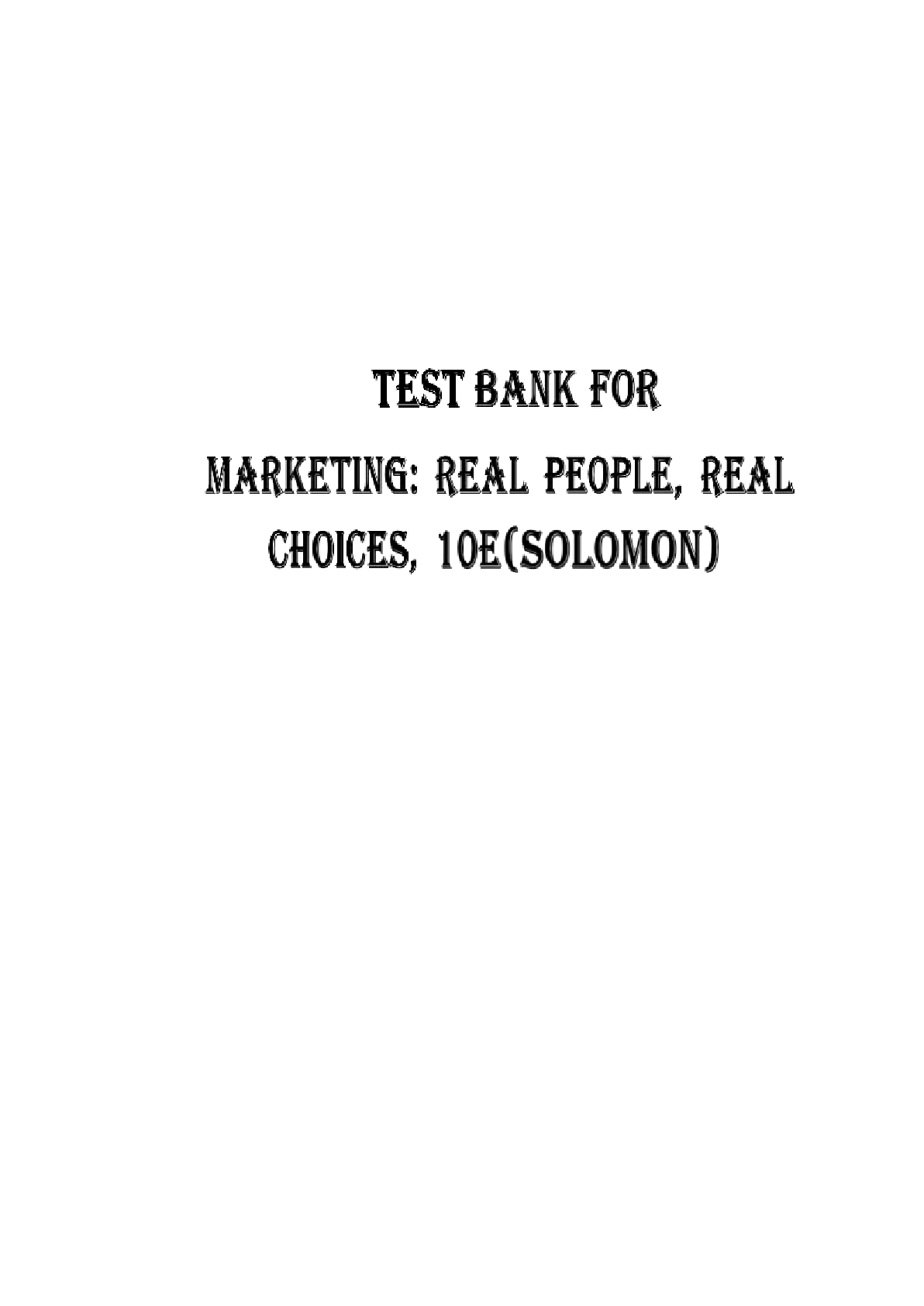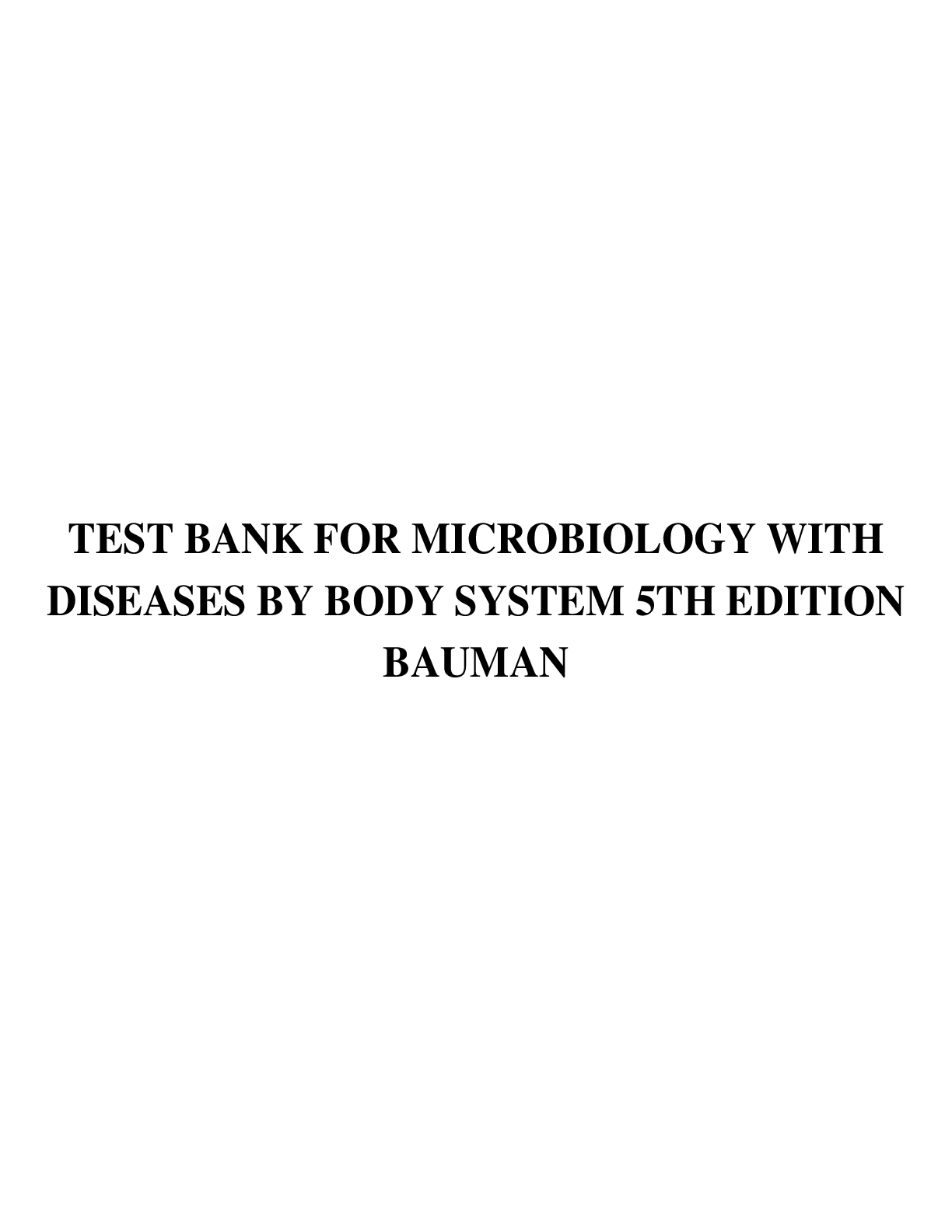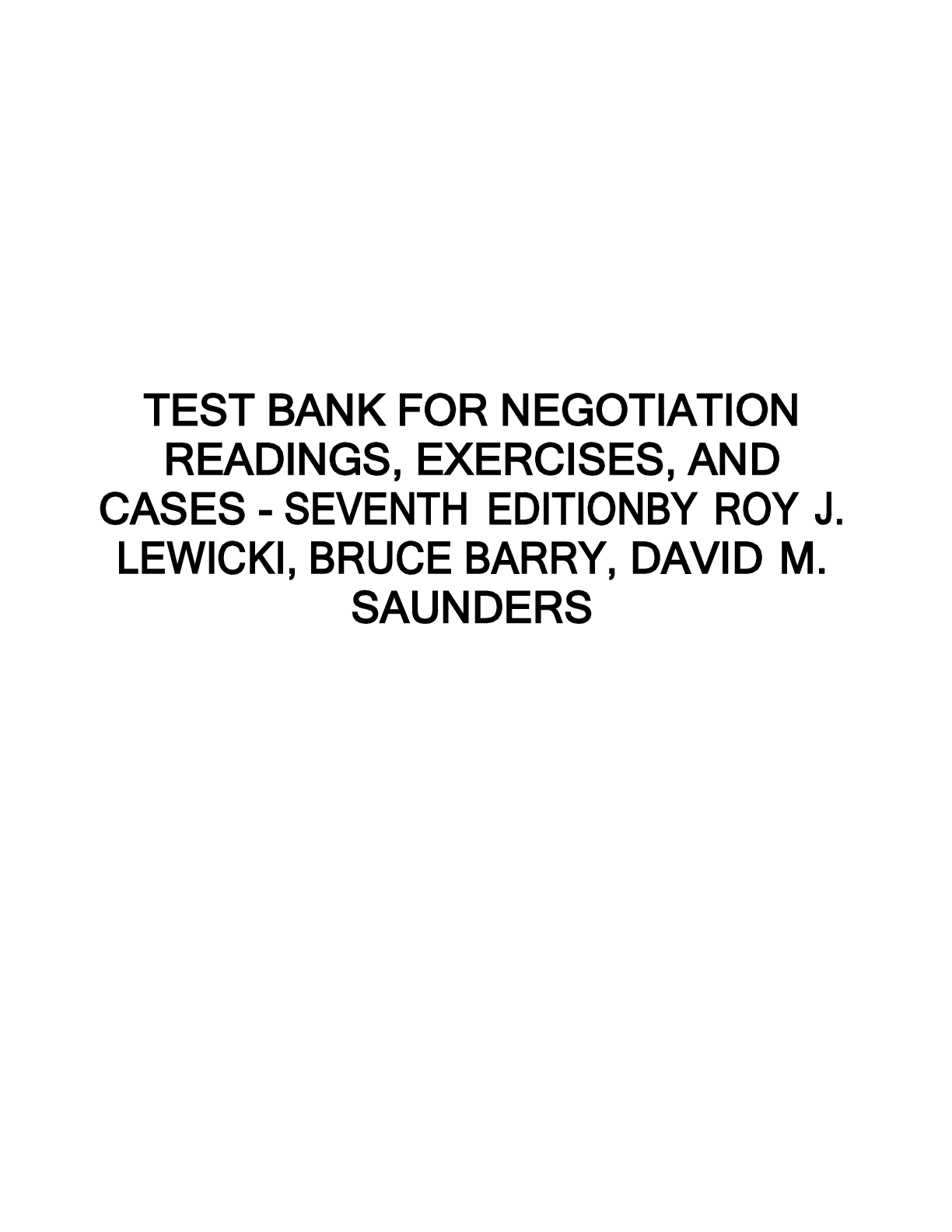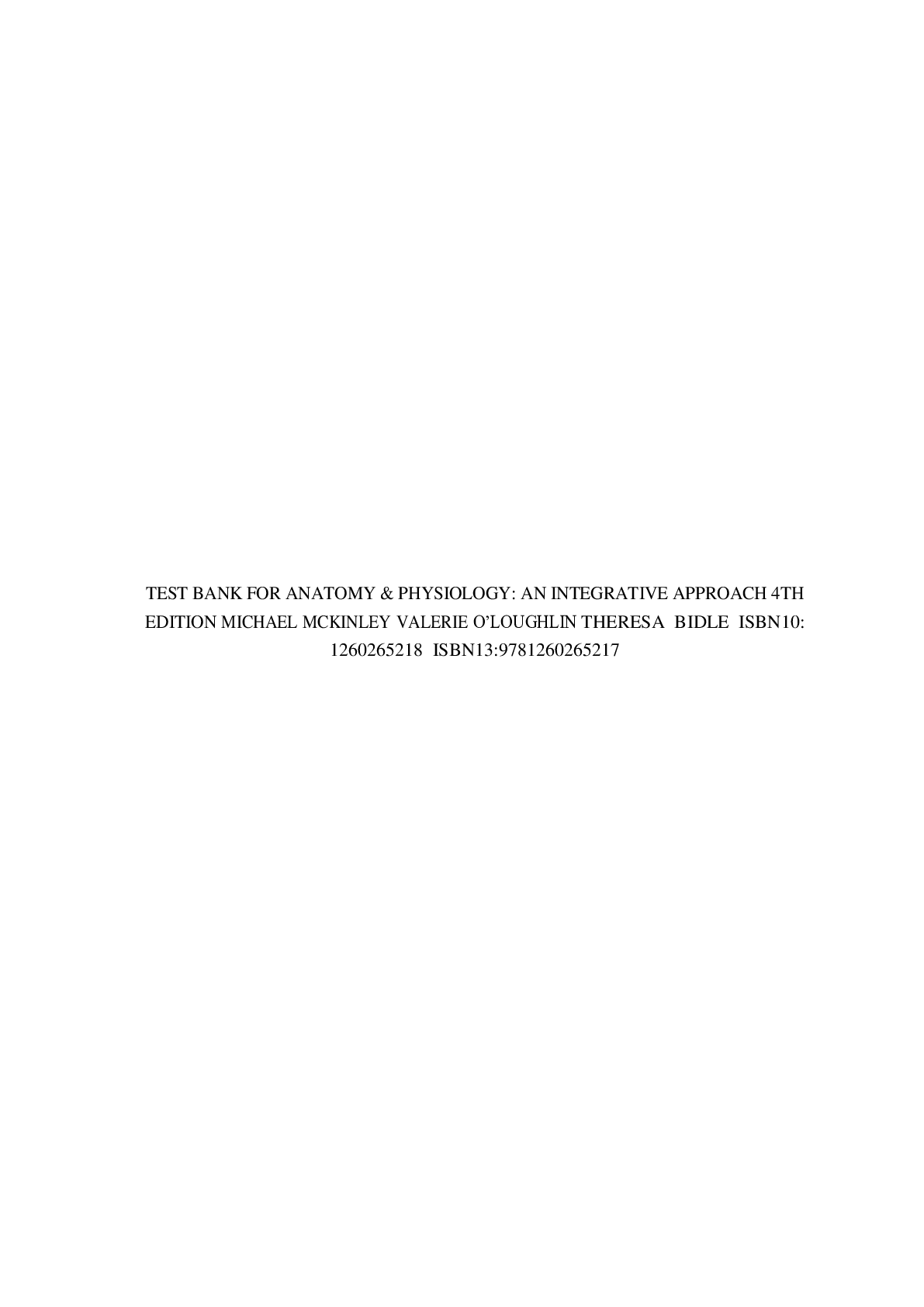*NURSING > TEST BANKS > TEST BANK FOR CLINICALNURSING SKILLS AND TECHNIQUES9TH EDITION BY PERRY (All)
TEST BANK FOR CLINICALNURSING SKILLS AND TECHNIQUES9TH EDITION BY PERRY
Document Content and Description Below
Chapter 01: Using Evidence in Practice Perry et al.: Clinical Nursing Skills & Techniques, 9th Edition MULTIPLE CHOICE Evidence-based practice is a problem-solving approach to making decisions abou... t patientcare that is grounded in: the latest information found in textbooks. systematically conducted research studies. tradition in clinical practice. quality improvement and risk-management data. ANS: B The best evidence comes from well-designed, systematically conducted research studies described in scientific journals. Portions of a textbook often become outdated by the time it is published. Many health care settings do not have a process to help staff adopt new evidence in practice, and nurses in practice settings lack easy access to risk-management data, relying instead on tradition or convenience. Some sources of evidence do not originatefrom research. These include quality improvement and risk-management data; infection control data; retrospective or concurrent chart reviews; and clinicians‘ expertise. Although non–researchbased evidence is often very valuable, it is important that you learn to rely more on researchbased evidence. DIF: Cognitive Level: Comprehension REF: Text reference: p. 2OBJ: Discuss the benefits of evidence-based practice. TOP: Evidence-Based Practice KEY: Nursing Process Step: AssessmentMSC: NCLEX: Safe and Effective Care Environment (management of care) When evidence-based practice is used, patient care will be: standardized for all. unhampered by patient culture. variable according to the situation. safe from the hazards of critical thinking. ANS: C Using your clinical expertise and considering patients‘ cultures, values, and preferences ensures that you will apply available evidence in practice ethically and appropriately. Even when you use the best evidence available, application and outcomes will differ; as a nurse,you will develop critical thinking skills to determine whether evidence is relevant and appropriate. DIF: Cognitive Level: Application REF: Text reference: p. 2OBJ: Discuss the benefits of evidence-based practice. TOP: Evidence-Based Practice KEY: Nursing Process Step: AssessmentMSC: NCLEX: Safe and Effective Care Environment (management of care) When a PICOT question is developed, the letter that corresponds with the usual standard of care is: P. [Show More]
Last updated: 2 years ago
Preview 1 out of 510 pages
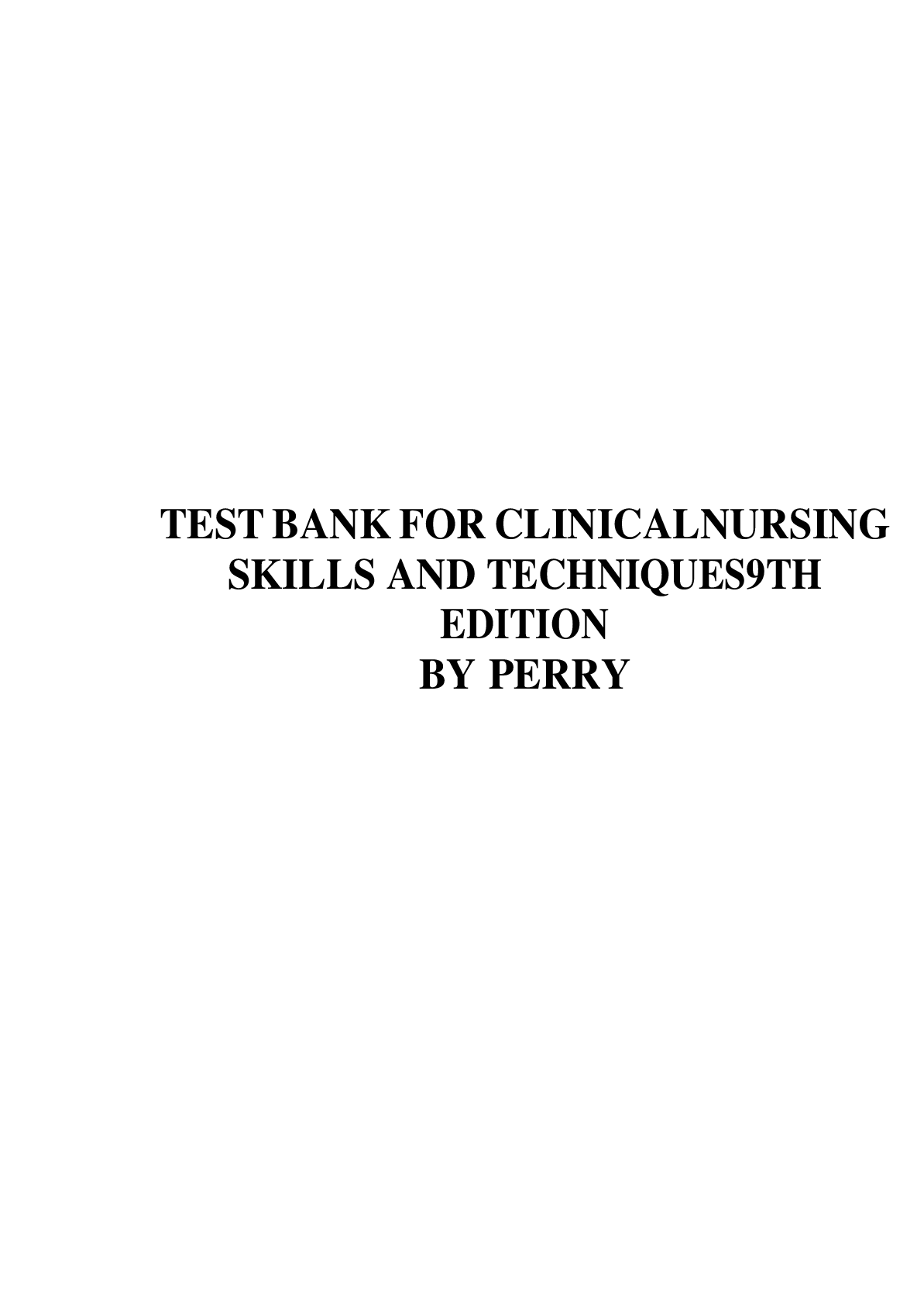
Buy this document to get the full access instantly
Instant Download Access after purchase
Buy NowInstant download
We Accept:

Reviews( 0 )
$21.00
Can't find what you want? Try our AI powered Search
Document information
Connected school, study & course
About the document
Uploaded On
Dec 17, 2022
Number of pages
510
Written in
Additional information
This document has been written for:
Uploaded
Dec 17, 2022
Downloads
0
Views
48

